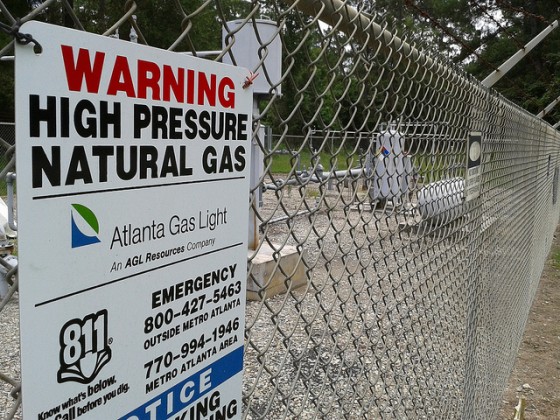
How Do Natural Gas Delivery Systems Operate?
Today’s blog follows along the line of the one I posted last week about the hydraulic fracturing, or “fracking”, process used to extract natural gas and how it affects each and every one of us. Despite the controversy surrounding this process, natural gas is commonly recognized as one of the cleanest and most efficient sources of energy available on the planet. Humans have been exploiting it for heat, light, and other essential services for millennia. Conventional natural gas—easily lost to the atmosphere due to its inherent low density—is typically transported via pipelines. Here is a little look into the background, extraction and transportation of natural gas in the world today.
The Background
Natural gas is a hydrocarbon—that is, a compound of hydrogen and carbon atoms—and, like coal and petroleum, a fossil fuel, in that it’s derived from the decomposition of ancient organic matter. Dead plants, animals, and other organisms can produce storable natural gas if certain conditions are met, notably burial. Thermogenic gas is that created when organic matter is sequestered deep beneath layer upon layer of sedimentary material such as mud and silt; the intense pressure of those overlying depositions and the high temperatures encountered well under the Earth’s surface dismantle carbon bonds and produce methane and the other components of natural gas.
So-called biogenic gas is that produced when microbes actively decompose organic material in oxygen-poor environments, such as the floors of isolated lagoons or lake basins. Such gas is usually formed nearer to the surface than thermogenic reservoirs, and requires particular environmental settings to actually be effectively trapped rather than escape into the air. Because natural gas has a low density, its propensity is to ascend through pores in strata and, barring some impermeable layer, potentially transfer to the atmosphere.
Extraction and Transport
Natural-gas reserves are pockets of methane and associated gases stored under the Earth’s surface within layers of sedimentary rock such as sandstone and limestone. Such reservoirs can be identified using seismic surveying. Increasingly, “unconventional” natural-gas reservoirs, such as those contained within the tightly packed pores of shale beds, are targeted as conventional sources become overtaxed and new technology, such as hydraulic fracturing (or hydrofracking), brings previously inaccessible stores into grasp.
Particularly in very deep deposits, natural gas may be almost entirely composed of methane. Often, however, it’s a mixture of methane and other gases such as propane, ethane, and butane. Those associated byproducts may be separated out and utilized on their own. So-called “wet” natural gas is that drawn up in combination with liquid hydrocarbons, which must be removed at some point to produce “dry” gas suitable for delivery.
Natural gas is delivered along pipelines from its extraction area to markets by capitalizing on its property of flowing from greater to lower pressures. Gathering lines transfer the gas from wells to collection hubs where it’s routed into long-distance pipelines. Compressor or pumping stations along the way boost the pressure to maintain the desired rate of flow—often 15 to 30 miles per hour.
Pipelines are equipped to sustain substantially greater pressures than those normally experienced in natural-gas delivery—an important safety precaution. As the American Gas Association notes, pipelines in well-populated regions may be conveying gas at less than half the pressure they’re constructed to accommodate.
“City gates” or “gate stations” operated by local utility companies receive incoming gas from the main pipelines. Here the gas pressure is reduced for safe distribution, and a chemical, mercaptan, is added to the gas to lend it its infamous rotten-egg aroma. (Natural gas has no scent, so such an additive is necessary to help cue people into leaks.)
Controlled by rigorous, real-time monitoring (through equipment developed by companies such as Swinton Technology), gas is then conveyed from gate stations to main lines and ultimately small service lines to deliver to residential and commercial gas meters.
The whole natural-gas delivery system is a complex one transpiring across remarkable distances, yet the robust and tightly controlled infrastructure provides numerous built-in safeguards to help provide a secure and reliable service.
————–
Here’s the question, after reading the above on how natural gas delivery systems operate, do you think it is worth the effort to continue extracting the natural gas sitting below the earth’s surface? With fracking having both proven and potential dangers, shouldn’t other methods of tapping into these natural gas resources be explored? I mean, natural gas is a clean and efficient source of energy in and of itself. But can the same be said if the primary method of extraction is through fracking?
This post was co-authored by Tom Grant. Biofriendly Blog would like to thank Tom for his contribution and the information he shared. Tom consults businesses on environmental issues. He likes being involved in a fast growing field and enjoys sharing his environmental data resources and biofriendly topics on environment blogs.
Image courtesy of John S. Quarterman / Flickr Creative Commons




Post a comment